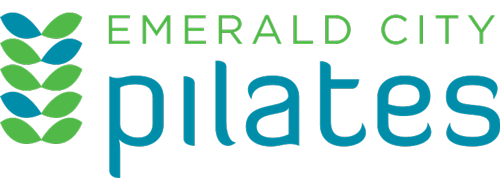Your Core is More than Crunches. Here’s Why.
Think the only way to strengthen your core is by doing hundreds of ab-burning crunches? Well, luckily that is far from the truth.
Having worked as a Pilates instructor for the last 13 years, I find that one of the most common misconceptions that new clients have is that they are only working their core when they do crunches or something that makes them feel like their abs are on fire. Though not often portrayed as such in mainstream media, abdominal core muscles work in all ranges of motion including flexion (crunches), side-bending, rotation, or extension (backbend) of the spine. They work in way more directions than most people realize.
The reason is that deep core muscles are very different from the superficial muscles we are most familiar with like the lats, the rectus abdominis (your six-pack muscle), and the glutes (your butt). Just like an onion, the human body has different layers of muscles that are responsible for different actions. The aforementioned superficial muscles that we all know about from Anatomy 101 play a large role in mobility (ie., moving your body) whereas those deep core muscles play a much larger role in stability. Core muscles, or as we industry nerds call them, local stabilizers, are designed to work in all ranges of motion which is why they eliminate pain when they are firing properly and why we experience chronic pain when they don’t.
Because core muscles are so deep in the body and fire at a low-level all of the time, they are much more difficult to “feel”. Not only do the different layers have different responsibilities, but they also have different ways that we experience them activating. With core muscles, it is much more subtle than what many people expect due to their design. Layer this on top of the fact that core muscles respond best to low weight stimulus like a flex band and you have an entirely new layer of muscles that need their own specialized workout routine. It just so happens that Pilates is excellent for training deep, stabilizing core muscles because of the equipment we use and our focus on form and control.
Another surprising core muscle fact is that they are located in every joint of your body and not just your abdominal area. Just like our trunk, our hip, shoulder, knee, etc. all have core muscles. The reason we hear about them so much relevant to our trunk is that they help us to look good (hello, flat abs!) and reduce pain (hello, stability!). If you’ve ever tried to shoot a cannon from a canoe (who hasn’t?), you’ll understand why it’s important that the center of your body has its stabilizing muscles working correctly.
For example, have you heard of the rotator cuff? Those are the core muscles for your shoulder joint that give that joint stability. Because the bones in this joint are shaped similarly to a golf ball (humeral head) balancing on a tee (shoulder socket), it’s the deep stabilizing muscles (ie., shoulder core or the rotator cuff) that create a significant amount of stability at this joint. As you move your arm around, these tiny muscles are fine-tuning the movement at a deep level to ensure that the ball stays balanced on the socket in all directions.
If you experience chronic pain in your body, there’s a high likelihood that the core muscles may not be firing properly. The best way to assess is to see a trained professional that can help you identify if that may be your issue as well as give you exercises that will specifically target the deep core muscles of that joint.
Our team at Emerald City Pilates specializes in this type of work which is how we have been able to help so many people to get rid of those annoying aches and pains and return to having a body that looks good and feels great. Check out our New Client Special if you want to meet with one of our highly trained Pilates specialists and experience core muscles in an exciting new way.



